




Sure, it's great to decorate your lobby like Candyland. But any floor can decorate their lobby. We figure if you can't play Candyland, it's not worth it. Or, more accurately, we figure if you can't turn lobby decoration into a time-consuming technical project that prevents you from getting work done and puts your body at risk of physical injury, it's not worth it.
With that in mind, we set about turning our Candyland decorations into a life-sized, interactive Candyland game. You start the game and draw cards by clapping, and the winner - the most talented Canyland-er - gets a precious candy reward, dispensed automatically when you reach the final square.
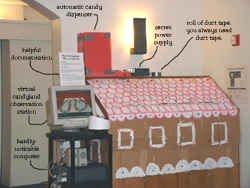 |
The image on the upper-left demonstrates the overall layout. A PC was used to run Candyland and display a virtual representation of the game (upper-right). The game was built in OpenGL, using CHAI3D as a nice wrapper, to save time... and we did need to save time, because we blew all our time on the damn clapper, and only had about a day to make the game itself. Players start at square zero (lower-left), and a few claps later, they're having a raucous good time (see Tal, lower-right). |
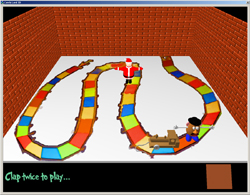 |
 |
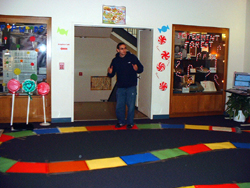 |
|
Dan and Augusto spent a couple nights soldering away and happily abusing robotics resources to get the clapper working. |
||
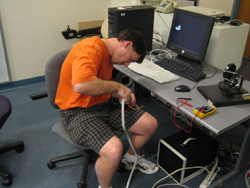 |
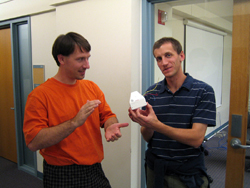 |
 |